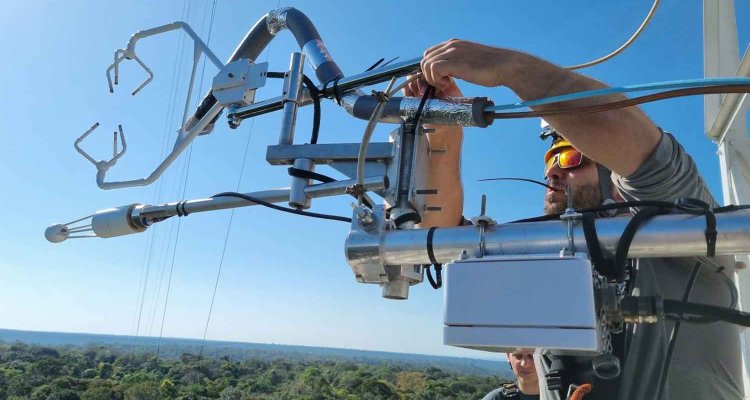
News
Is the rainforest a sink or a source of CO2?
Clouds talk to leaves and the leaves talk back. Scientists from Wageningen and Utrecht spent three weeks in the Amazon listening to that conversation. The image of a dialogue comes from professor of Meteorology and Air Quality Jordi Vilà. He uses it in one of the blogs written during the expedition to the Brazilian rainforest. Trees don’t talk, of course, but the image gets the point across. Speech is communication; in this case the interaction of leaves and passing clouds through the play of light.
The project Vilà and his team have been working on for some time is called CloudRoots. ‘Through CloudRoots, we want to make the connection between clouds, precipitation and photosynthesis in the rainforest under light that is constantly changing,’ he explains. So it’s about the interaction between the atmosphere and the vegetation. There are indications that due to climate change, the Amazon is no longer absorbing CO2 like a carbon sink, but is emitting it instead, thus becoming a source. This question is usually approached from the carbon cycle perspective. We say: in this perspective, include the water and energy exchange and the role of clouds in that through their interplay with radiation.’
‘Many scientists who research the CO2 cycle leave the dynamics of clouds out of the picture,’ adds Vilà’s colleague Oscar Hartogensis. ‘They assume a kind of daily average amount of shade and do not study what actually happens at the leaf level. But we are doing just that. These are fast processes. We look at the very fast interaction between the leaf and the cloud.’ That interaction goes as follows. As soon as a plant is in the shade, photosynthesis stops immediately, because its fuel supply (the sun) has been interrupted. This stops both the absorption of CO2 and the production of water vapour by the leaf. ‘And that evaporation is in effect fuel for the next cloud.’